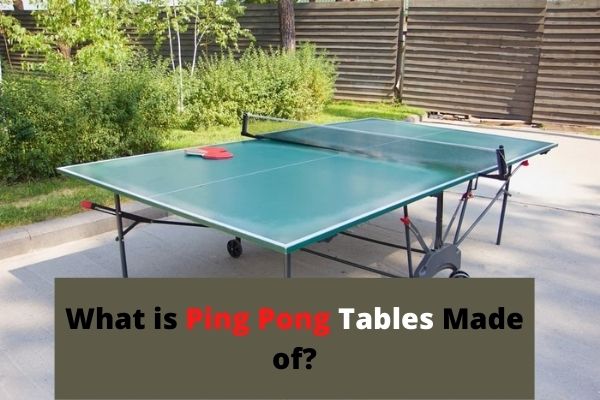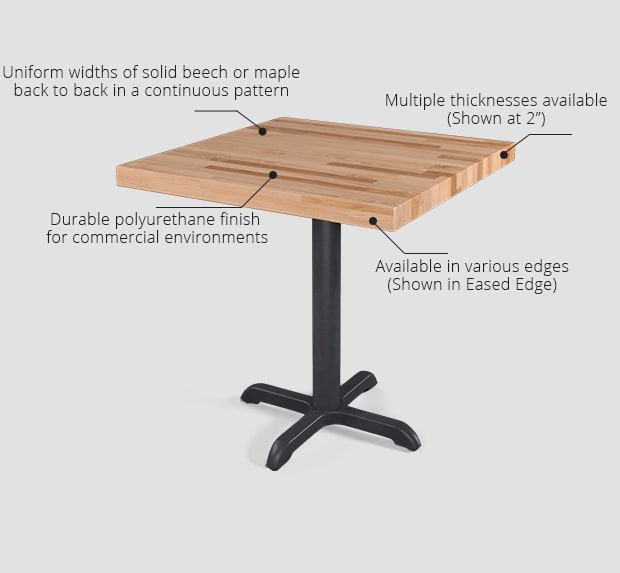Tabletops are usually made of either plywood, particle-board, plastic, metal, concrete, or fiber-glass and can vary in thickness between 12mm and 30mm (0.47 – 1.2 inches). However, the best tables have wooden tops with a thickness of 25-30mm (1 inch). The top layer of a wooden table is usually made from glossy paint or high-pressure laminate.

Contents
Design and Manufacturer Varies
The undercarriage, also known as the bars, are normally manufactured using steel and provide a sturdy construction. Their design varies quite a bit between manufacturers. Some manufacturers have been known to use square or rectangular tubing along with some kind of ball bearing roller system for ease of movement while other companies have used circular tubing alone.

Aesthetically speaking, the undercarriage has improved over the years and now comes in many different colors, shapes, and designs. The netting is the standard “pocket” type with metal posts on each end to adjust the height. It also comes in 29″, 1-1/2″, or 1-3/4″ thicknesses.
Related Guide: Best Ping Pong Paddles Under $50
What Material Is Used For Table Made Of?
Ping pong tables are generally constructed using round metal tubing 11–12 millimeters (7/16 inch) in diameter. Additional metal rods form a parallelogram, which helps the table maintain its shape. The rods that form the legs of the table are usually made from a single piece of bent steel tubing that is welded into a square frame to add additional rigidity.

After cutting and finishing at specific angles, these square tubes have holes drilled in them so they can be assembled with nuts and bolts or screws. Long metal plates may be inserted between each tube segment so there is no gap between them for balls to get stuck in while playing.
The material from which ping pong tables are manufactured varies according to personal preference and on the intended use of the final product. Wood fiberboard tables are typically used in family play situations because they tend to be more affordable than other types although particle.
Commercial Purposes:
Ping pong tables made of wood fiberboard typically consist of layers of plywood bonded to particleboard or high-density fiberboard (HDF) that is then covered by melamine resin laminate (“melamine”). This combination gives the table its smooth playing surface while providing increased durability and stiffness.

The construction process requires complicated machinery which can result in an uneven playing field so sanding may be required to achieve a flat top. However, this type of ping pong table is ideal for family play because it does not mar easily when impact with projectiles occurs.
Material/Source:
Ping pong tables are typically made of wood fiberboard, which is a combination of layers of plywood bonded to particleboard or high-density fiberboard (HDF) that is then covered by melamine resin laminate (“melamine”). This combination gives the table its smooth playing surface while providing increased durability and stiffness.
Advantages:
The construction process requires complicated machinery which can result in an uneven playing field so sanding may be required to achieve a flat top. However, this type of ping pong table is ideal for family play because it does not mar easily when impact with projectiles occurs. It is also less expensive than other types of tables.
Disadvantages:
This type of table is not recommended for commercial or serious play because it may warp, chip, or dent under heavy use. It does not provide the bounce of an aluminum-frame table, and its surface can be difficult to clean. The materials used in making this table are generally less durable than other types of tables.
Other Facts/Notes:
A wooden tabletop may be made from one piece of solid wood that is then clear coated with a polyurethane-acrylic finish, while a laminate table is composed of multiple layers bonded together. Although prices vary widely depending on size and quality, some companies offer these types of tables starting at around $400.